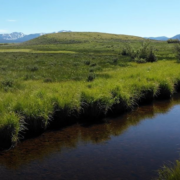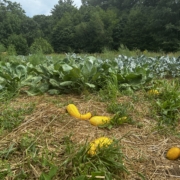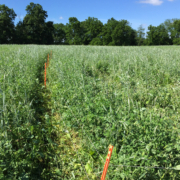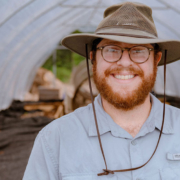Meet The Subsurfer
 Print This Post
Print This Post
By Nina Prater, NCAT Agriculture Specialist
Before I became an NCAT agriculture specialist, I worked for the Sebastian County Conservation District as a Water Quality Technician. A big part of my job was creating Nutrient Management Plans (NMPs) for area farmers in order to ensure they were applying the appropriate amount of poultry litter to their fields based on soil tests, slope, forage type, and other parameters. With so many poultry farms in this part of Arkansas, there is an over-abundance of poultry litter. If over-applied, it can cause water quality issues. If applied properly, it’s a valuable fertilizer. My job was to help farmers find the balance of appropriate fertilization levels to maximize production and minimize damage to water quality. Even though I no longer write NMPs, I was still excited to hear about a new way of applying poultry litter to fields that significantly reduces (up to 90%) the risk of nutrient run-off and can be used in both pasture-based and specialty crop operations.
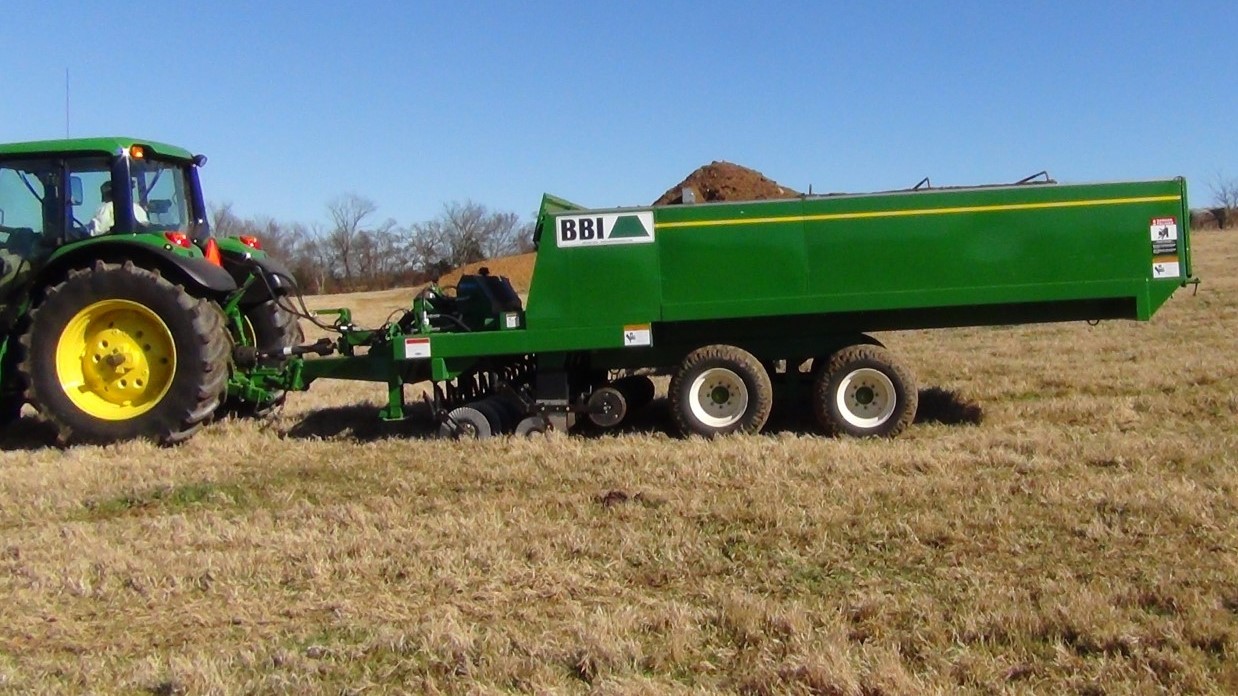 To learn more about this novel approach to poultry litter utilization, I interviewed Dr. Amanda Ashworth, Research Soil Scientist with USDA’s Agriculture Research Service (ARS) based in Fayetteville, Arkansas, and Dr. Phillip Owens, the Research Leader at the Dale Bumpers Small Farms Research Center in Booneville, Arkansas, for the ATTRA podcast. They told me all about a new piece of farm equipment, developed at the Dale Bumpers Small Farm Research Center, called the Subsurfer. Dr. Ashworth and Dr. Owens introduced me to this new piece of equipment, shared with me what their research project is trying to find out, and highlighted their hopes for the Subsurfer in the future.
To learn more about this novel approach to poultry litter utilization, I interviewed Dr. Amanda Ashworth, Research Soil Scientist with USDA’s Agriculture Research Service (ARS) based in Fayetteville, Arkansas, and Dr. Phillip Owens, the Research Leader at the Dale Bumpers Small Farms Research Center in Booneville, Arkansas, for the ATTRA podcast. They told me all about a new piece of farm equipment, developed at the Dale Bumpers Small Farm Research Center, called the Subsurfer. Dr. Ashworth and Dr. Owens introduced me to this new piece of equipment, shared with me what their research project is trying to find out, and highlighted their hopes for the Subsurfer in the future.
Some Background
Designed and patented by Dr. Dan Pote, the Subsurfer inserts dry poultry litter a few inches into the soil profile without disturbing the soil. It’s kind of like a combination of a no-till seed drill and a manure spreader. It was originally designed to be used in pasture and forage production systems, but Dr. Ashworth has been leading a three-year research project to assess its use in organic specialty crop production. This research, funded by the Arkansas Department of Agriculture, is trying to determine best practices for using the Subsurfer in organic sweet corn and edamame production.
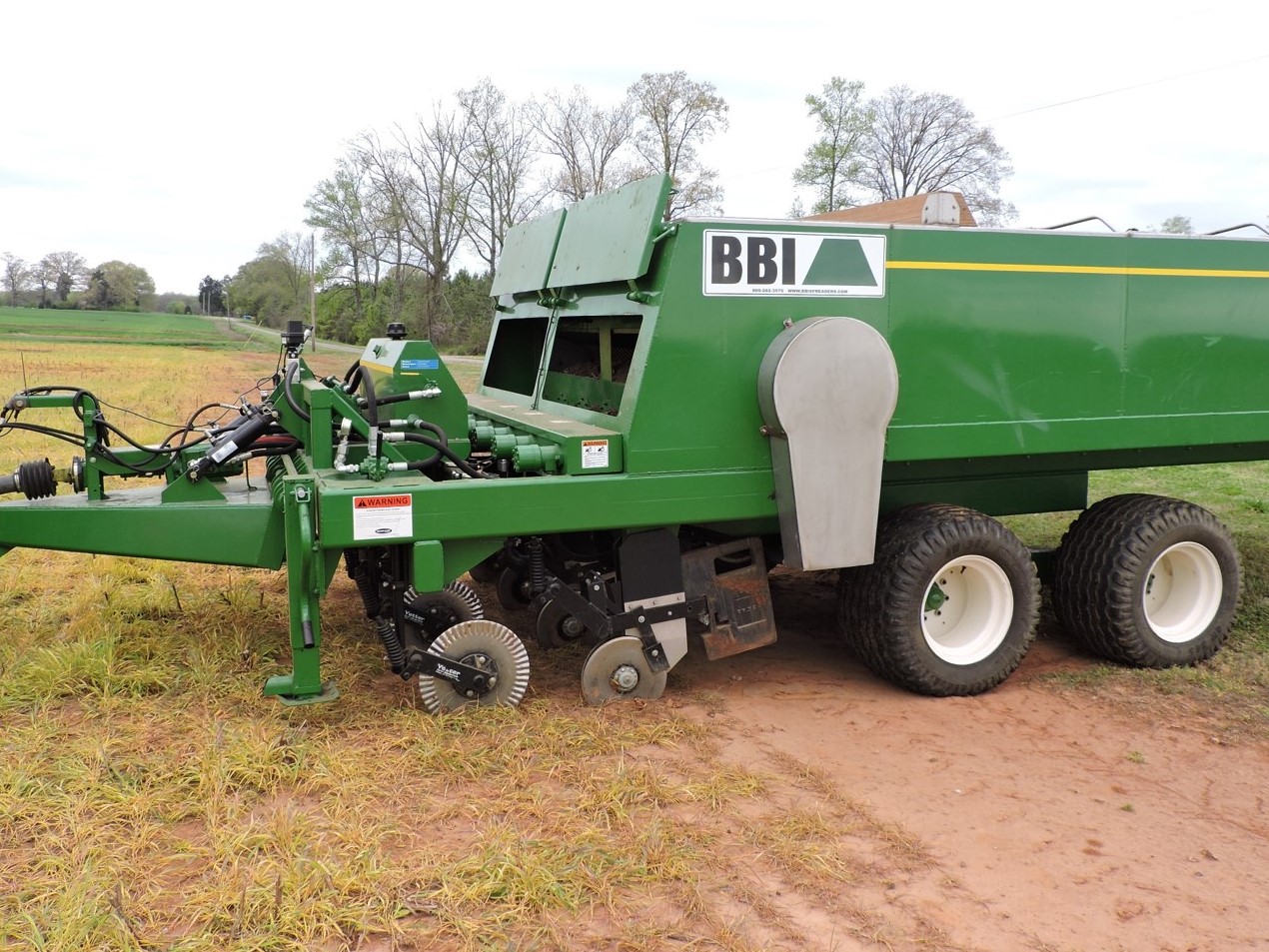 Before we talk about that research project, though, let’s look at why inserting poultry litter into the soil is so different from surface application of poultry litter. The Subsurfer uses coulters to cut lines in the soil, then tubes feed the litter into the small slices in the soil. Behind the tubes, press-wheels close up the soil on top of the litter. This means that the litter is not exposed to the air where it could lose nitrogen (N) through volatilization (i.e., where solid forms of N in the litter turn to the gas form, ammonia). That means more N stays in the soil, available for plant uptake. Another benefit of having the litter within the soil rather than on the surface is the nutrients in the poultry litter are not vulnerable to surface run-off. Avoiding nutrient run-off has a two-fold benefit: more nutrients remain available for the crops, and less nutrients are introduced to surface water where they can cause eutrophication.
Before we talk about that research project, though, let’s look at why inserting poultry litter into the soil is so different from surface application of poultry litter. The Subsurfer uses coulters to cut lines in the soil, then tubes feed the litter into the small slices in the soil. Behind the tubes, press-wheels close up the soil on top of the litter. This means that the litter is not exposed to the air where it could lose nitrogen (N) through volatilization (i.e., where solid forms of N in the litter turn to the gas form, ammonia). That means more N stays in the soil, available for plant uptake. Another benefit of having the litter within the soil rather than on the surface is the nutrients in the poultry litter are not vulnerable to surface run-off. Avoiding nutrient run-off has a two-fold benefit: more nutrients remain available for the crops, and less nutrients are introduced to surface water where they can cause eutrophication.
The Research Project
The research Dr. Ashworth is conducting aims to determine the optimal crop row distance from the poultry litter bands for the greatest crop yield, and crop quality. Planting directly into the litter would damage the plants, so the litter has to be inserted to the side of the plant row. But what distance is best for different crops? It appears, after three years of trials, that the answer varies based on the crop. For corn, a 5-inch planting distance was optimal, and for edamame, a legume, it was a bit more flexible with 5-to15-inch planting distances not differing, but all Subsurfer banding treatments improved crop growth relative to surface poultry litter application.
An additional finding of the research was that the crop quality was improved with the use of the Subsurfer, even as compared to plots that were fertilized with urea. Dr. Ashworth expressed surprise at this result, and thinks it was likely the additional nutrients contained in poultry litter that led to this improved quality. The liming properties of the poultry litter, as well as micronutrients it contains, supported the crop in ways that urea, which only supplies N, cannot match.
Because poultry litter is allowable under USDA’s organic certification rules, it is an excellent fertilizer option for organic operations. Dr. Ashworth and Dr. Owens see great potential for the Subsurfer on small to medium-sized farms, organic and conventional alike. It can only cover approximately 20 to 30 acres in one day, so it is not likely to work well on farms in the thousands of acres, but for smaller-scale operations, it could provide a way to fertilize efficiently.
Have I talked you into wanting a Subsurfer yet? Are you now wondering where you can get one of your own? It’s great for pasture and forage! It’s great for organic specialty crop production! It can reduce greenhouse gas losses by about 88 percent! It’s great for water quality! Sign me up, right? Well, unfortunately, they are not being manufactured for mass-marketing at the moment. Dr. Owens is hoping to find a manufacturer for them, but at the moment there are only a handful of Subsurfers in existence. If you are a manufacturer interested in pursuing this opportunity, please contact Dr. Owens directly. His email address is phillip.owens@usda.gov.
For more details about this project, you can listen in on our conversation on the ATTRA podcast, Voices From the Field. In this episode, Meet the Subsurfer, Dr. Ashworth and Dr. Owens go into greater depth about the Subsurfer and its potential as a novel tool for nutrient management. Please give it a listen! Questions? Contact me, Nina Prater, at ninap@ncat.org.
Related ATTRA Resources
Arsenic in Poultry Litter: Organic Regulations
Sweet Corn: Organic Production
Other Resources
Effect of Seeding Distance from Subsurface Banded Poultry Litter on Corn Yield and Leaf Greenness
Please complete a brief survey to let us know your thoughts about the content of this post.
This blog is produced by the National Center for Appropriate Technology through the ATTRA Sustainable Agriculture program, under a cooperative agreement with USDA Rural Development. ATTRA.NCAT.ORG.


